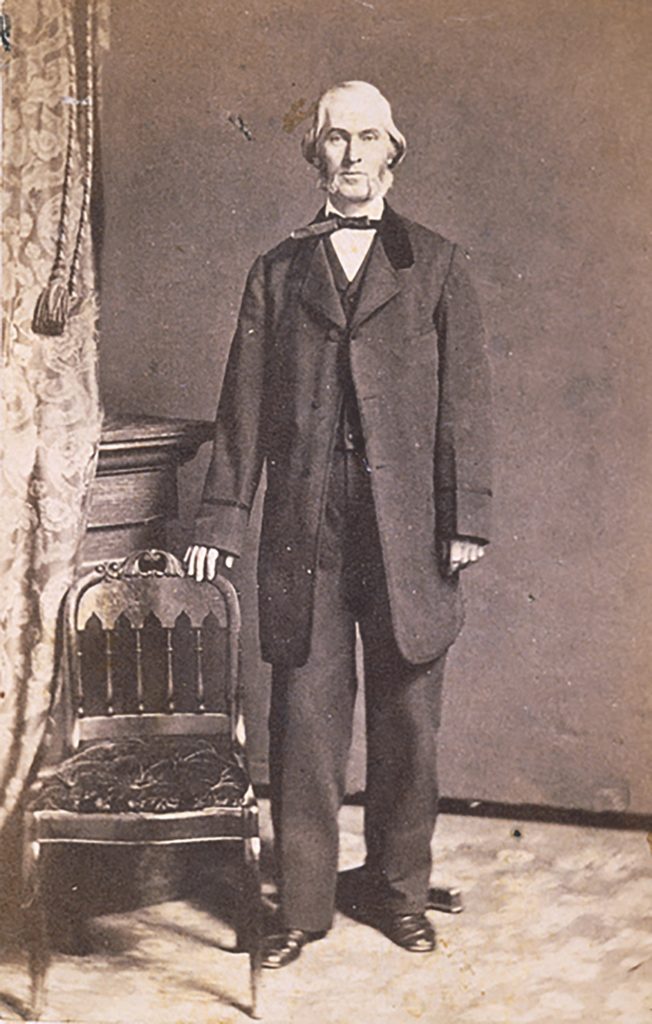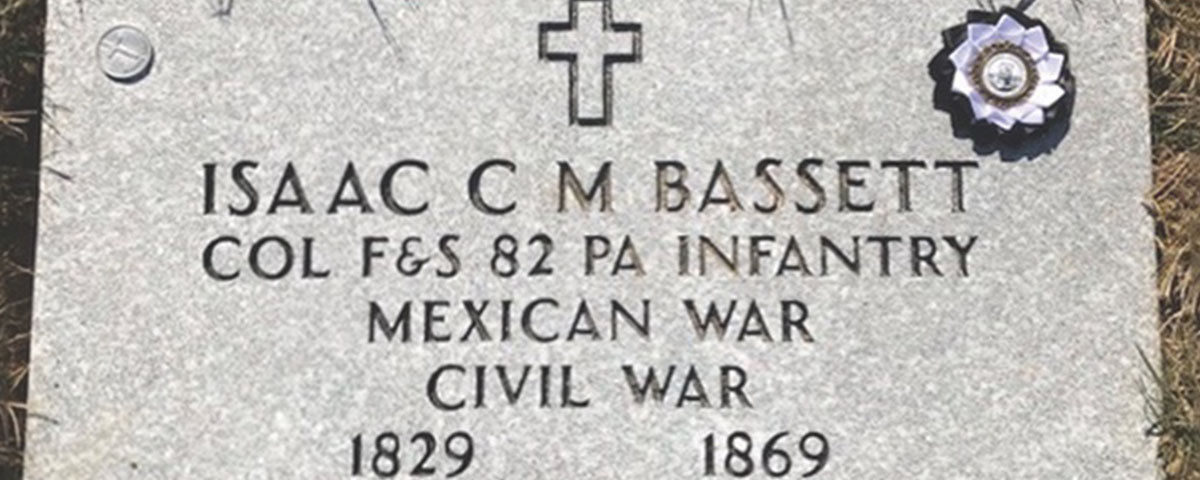
In May 1863, the Rev. John A. McKean departed Pennsylvania with a grim task. He had to retrieve the remains of Major Isaac C.M. Bassett of the 82nd Pennsylvania Infantry, who reportedly had been killed during the Second Battle of Fredericksburg. One can only guess the reverend’s reaction when he discovered that the major was actually alive and well. In the process of storming Marye’s Heights, the 82nd’s color-bearer was shot down. Bassett picked up the regiment’s colors and cried to his men, “Follow me,” then rushed and personally planted the colors on the enemy position. Newspapers falsely listed his name among the other senior officers of his brigade who had been killed or wounded during the assault on the entrenched heights.
On December 15, 1846, the 17-year-old Bassett had volunteered for the Mexican War as a private in the 1st Pennsylvania Infantry, only to be discharged nearly a month later after his superiors discovered he was a minor. In the interwar years, he lived in Philadelphia and worked as a coal merchant.
Bassett was commissioned a captain in the 82nd Pennsylvania on August 24, 1861. He was promoted to major on February 7, 1863, and to colonel on May 3, 1863, just in time to take command of the regiment and lead it at Gettysburg that summer. During the bloodletting at Cold Harbor in June 1864, the 82nd suffered 173 casualties, half of its effective strength. Bassett was among the casualties. His left index finger was mangled by an enemy shell and a bullet pierced the palm of his left hand close to the thumb, lodging in his arm near the elbow joint. A surgeon amputated his damaged finger after the battle. The bullet eventually worked its way down toward the opening of his wound and was then extracted. The subsequent surgery left him unable ever to clasp his left hand again.
On December 12, 1864, Bassett was brevetted brigadier general, although the brevet was not confirmed until February 14, 1865. He was later recognized “for distinguished services in the assault on the enemy’s lines near Petersburg, April 2, 1865, and for conspicuous gallantry at the battle at Little Sailor’s Creek, Va., April 6, 1865.” With stars adorning his shoulders, won for his capable leadership and bravery during the war, Bassett led the battle-hardened veterans of the 82nd with their bullet-riddled colors, draped with crape to honor President Abraham Lincoln, during the Grand Review in Washington, D.C., in 1865. The regiment was mustered out on July 13, 1865.
Bassett outlived the war barely four years. Just 40, he died of acute peritonitis in Philadelphia on October 2, 1869. The Philadelphia Inquirer declared that “his sudden death will be deplored by a large circle of friends and acquittances.”
He was originally buried at Philadelphia’s now-gone Odd Fellows Cemetery, but his remains were reinterred at Lawnview Cemetery in Rockledge, Pa., during the 1950s. Barrett’s grave remained unmarked until a veteran headstone was placed there in 2020.





